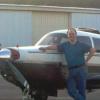interesting point about sump drain from accident
-
Members Online
- natdm
- vorlon1
- MoonFlyer68
- BlueDun
- Gone
- Greg Ellis
- BlueSky247
- Brian2034
- toto
- Pinecone
- Barneyw
- Fly Boomer
- Marc B
- Marcopolo
- Peter T
- Tcfurk
- SKI
- aviatoreb
- MB65E
- Danb
- Utah20Gflyer
- Rogerg
- mhrivnak
- ohdub
- Sue Bon
- KLRDMD
- McMooney
- DXB
- MatthiasArnold
- eman1200
- Jim F
- 201Mooniac
- bigmo
- finnicky7
- EricShr
- Jake@BevanAviation
- davevalenti
- Rmfriday
- Vance Harral


Recommended Posts
Join the conversation
You can post now and register later. If you have an account, sign in now to post with your account.